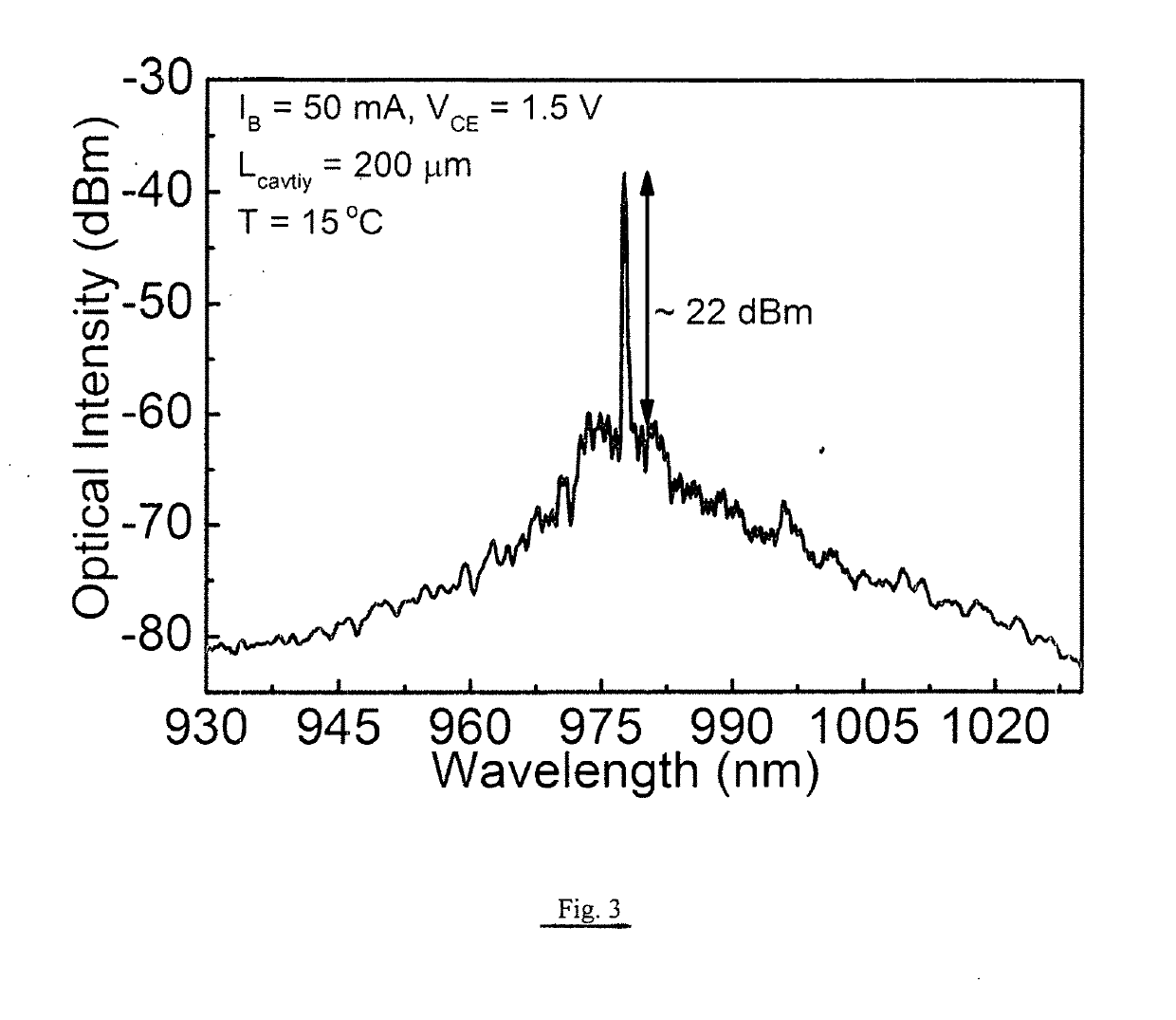Transistor laser electrical and optical bistable switching
a technology of optical bistable switching and transistor laser, which is applied in the direction of lasers, optics, semiconductor lasers, etc., can solve the problems of inability to apply optics to digital computers, limited bandwidth of digital electronic computers, and lack of suitable optical logic processors with scalable size and speed
- Summary
- Abstract
- Description
- Claims
- Application Information
AI Technical Summary
Benefits of technology
Problems solved by technology
Method used
Image
Examples
Embodiment Construction
[0029]The schematic energy band diagram of a heterojunction transistor laser (n-p-n) with a quantum-well (QW) in the base, photon-assisted tunneling at the collector junction, and a reflecting optical cavity are shown in FIG. 1 operating with emitter current injection, base recombination and transport, and tunneling collector current. The base recombination hole current (IBr) is supplied by the external base current (IB), the intracavity photon-assisted tunneling hole current (IICPAT, h), and the band-to-band tunneling hole current (IrT). The collector electron current (IC) is contributed from the base electron current reaching the collector junction (It), the intracavity photon-assisted tunneling electron current (IICPAT, e), and the band-to-band tunneling electron current (IrT). The photon generation is due to e-h recombination at base quantum-well, and the photon absorption is due to intra-cavity photon-assisted e-h tunneling at the collector junction. The corresponding hole curr...
PUM
 Login to View More
Login to View More Abstract
Description
Claims
Application Information
 Login to View More
Login to View More - R&D
- Intellectual Property
- Life Sciences
- Materials
- Tech Scout
- Unparalleled Data Quality
- Higher Quality Content
- 60% Fewer Hallucinations
Browse by: Latest US Patents, China's latest patents, Technical Efficacy Thesaurus, Application Domain, Technology Topic, Popular Technical Reports.
© 2025 PatSnap. All rights reserved.Legal|Privacy policy|Modern Slavery Act Transparency Statement|Sitemap|About US| Contact US: help@patsnap.com



